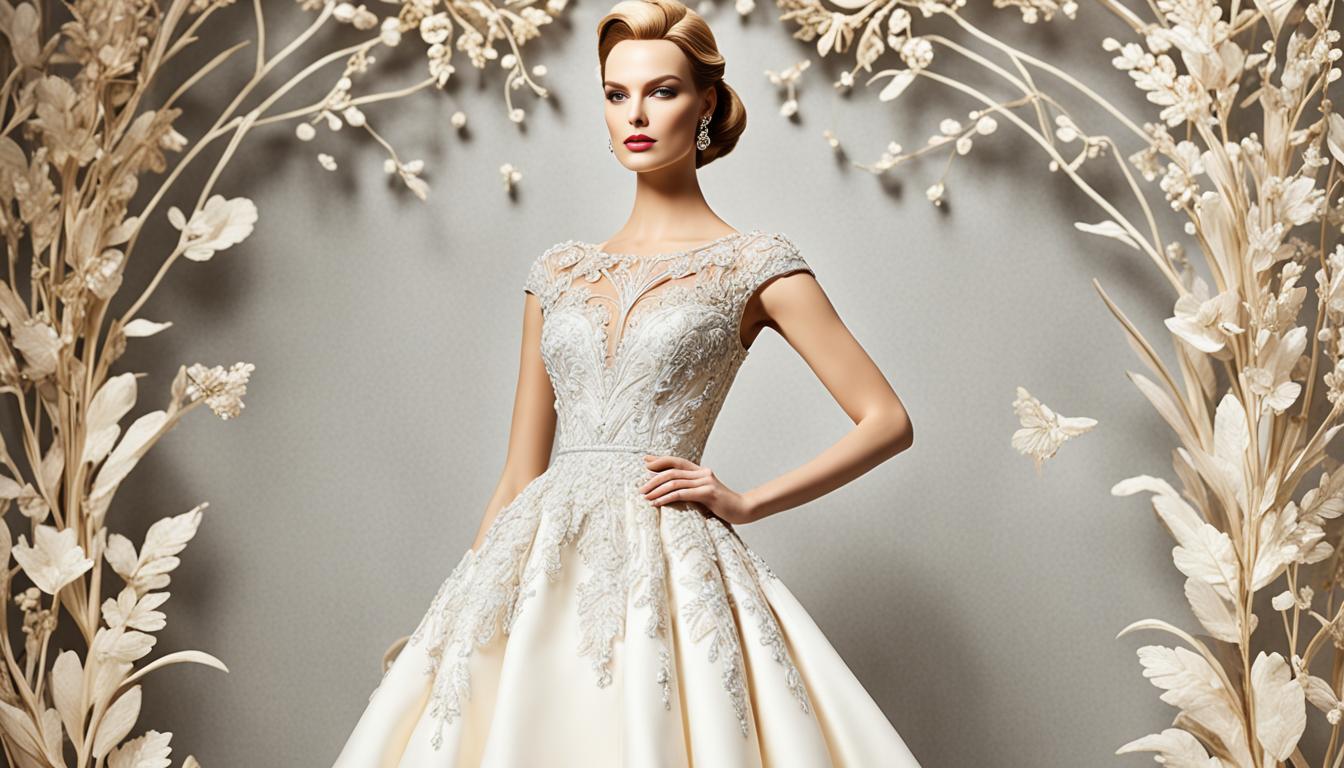The Pinnacle of Fashion: Understanding High-End Luxury Brands
Welcome to the mesmerizing world of luxury fashion, where exquisite craftsmanship, opulent designs, and prestigious brand names reign supreme. High-end luxury brands have long captivated fashion enthusiasts with their exceptional quality, unparalleled elegance, and timeless allure. In this article, we will delve into the intricacies of luxury fashion and explore why these iconic brands hold such immense appeal in the fashion industry.
Key Takeaways:
- Luxury fashion is synonymous with high-end brands, designer fashion, and exudes an unmistakable air of luxury.
- Luxury brands are characterized by their exceptional quality, craftsmanship, exclusivity, and rich heritage.
- Understanding the allure of luxury fashion involves exploring the psychology of luxury, its connection to social status, and the role it plays in shaping individual and collective identities.
- Iconic luxury fashion houses like Chanel, Dior, Gucci, and Prada have set the benchmark for elegance and sophistication.
- The making of high-end fashion involves meticulous attention to detail, premium materials, and unrivaled craftsmanship.
The Essence and Evolution of Luxury Fashion and High-End Brands
Luxury fashion and high-end brands have always held a special place in the fashion industry. Their exquisite designs, impeccable craftsmanship, and association with prestige have made them the epitome of style and sophistication. Understanding the essence and evolution of luxury fashion allows us to appreciate the rich history and cultural significance behind these coveted brands.
The origins of luxury fashion can be traced back centuries, with the aristocracy and royalty leading the way in setting fashion trends. It wasn’t until the 19th century that luxury brands as we know them today began to emerge, with the likes of Louis Vuitton and Hermès establishing themselves as pioneers of luxury craftsmanship.
Throughout history, luxury fashion has had a profound impact on popular culture and social status. It has not only influenced the way we dress but also shaped our perception of beauty, elegance, and success. From iconic red carpet moments to high-profile collaborations with celebrities, luxury brands have become synonymous with exclusivity and aspiration.
To remain relevant in an ever-changing fashion landscape, high-end brands have adapted to the shifting preferences of consumers and market trends. They have embraced technological advancements, expanded their presence in digital platforms, and explored innovative designs and materials. By redefining luxury for a new generation of consumers, these brands have sustained their appeal and continued to set the standard for fashion excellence.
Decoding the Allure: Why We Aspire to Own Luxury Brands
When it comes to luxury fashion, there is an undeniable allure that captivates us. The appeal of high-end brands goes beyond the exquisite craftsmanship and exclusive designs. It taps into our deepest desires, evokes emotions, and satisfies our psychological needs for social recognition and self-expression.
The Psychology Behind the Luxury Appeal
Understanding the psychology behind our fascination with luxury brands can provide valuable insights into our consumer behavior. Luxury fashion represents more than just material possessions; it embodies status, success, and prestige. Owning luxury items allows us to project an image of wealth, power, and discerning taste.
The desire for luxury is rooted in our instinctual need for tribal recognition. By owning luxury brands, we signal our belonging to an exclusive group and establish our social status.
Luxury brands create a sense of gratification and emotional reward. The exquisite craftsmanship and attention to detail indulge our senses, providing sensory pleasure and a heightened sense of self-worth. Owning a luxury item can evoke feelings of accomplishment, confidence, and luxury lifestyle.
Psychologically, luxury fashion acts as a symbol of achievement and personal accomplishment. It allows us to showcase our hard work, dedication, and achievements. By owning luxury brands, we seek validation and affirmation from both ourselves and society.
The Role of Luxury Brands in Social Status and Identity
Our personal sense of identity is closely intertwined with the brands we associate ourselves with. Luxury brands allow us to express our individuality, style, and values. They become part of our self-expression, building our personal brand identity in the realm of fashion and aesthetics.
The social status associated with luxury brands is not only a reflection of wealth but also of taste, sophistication, and cultural capital. By owning and displaying luxury items, we signal our affiliation with a particular social class and culture, reinforcing our elevated position within society.
Luxury brands act as social currency, enabling us to navigate social interactions and establish connections with like-minded individuals. They create common ground and provide a topic of conversation that transcends cultural and social divides. Luxury fashion becomes a universal language spoken by fashion enthusiasts and connoisseurs alike.
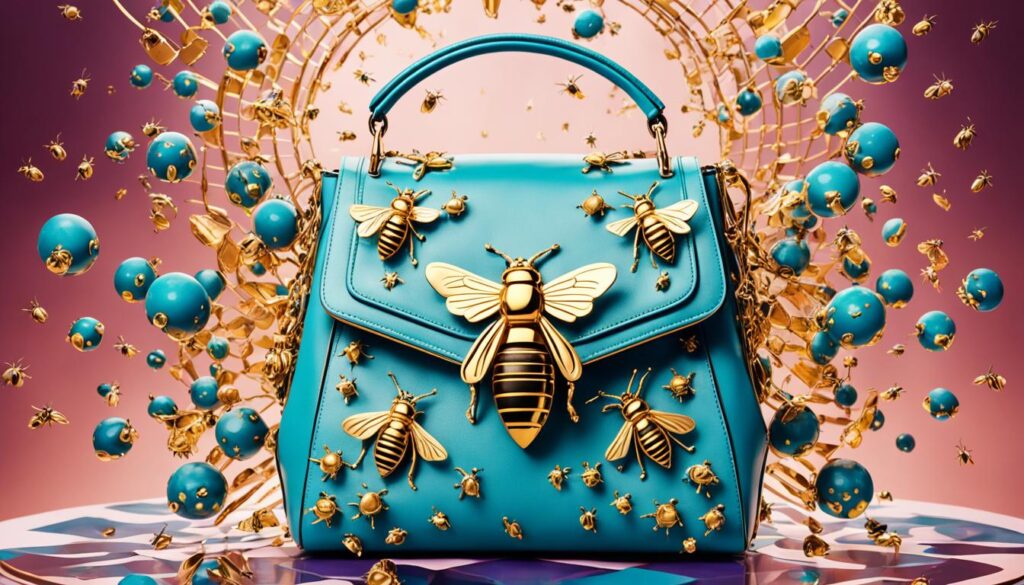
The Intersection of Luxury Fashion and Brand Identity
For luxury brands, the cultivation of brand identity is of utmost importance. Their unique brand narratives, values, and aesthetics differentiate them from mainstream fashion and strengthen their allure. Luxury fashion houses meticulously craft a brand identity that resonates with their target audience, creating an aspirational lifestyle that consumers strive to embody.
As consumers, we align ourselves with luxury brands whose values align with our own. By owning and displaying these brands, we become ambassadors of their identities, expressing our personal and cultural values through our fashion choices. Luxury fashion provides the canvas on which we paint the picture of who we are and who we aspire to be.
By exploring the psychology behind the allure of luxury brands and the role they play in shaping our social status and brand identity, we gain a deeper understanding of the profound impact they have on our lives. Luxury fashion goes beyond material possessions; it becomes an embodiment of our aspirations, values, and self-expression.
The Icons of Elegance: Leading Luxury Fashion Houses
In the world of luxury fashion, certain brands rise above the rest, embodying elegance, prestige, and timeless style. These fashion houses have made their mark on the industry, captivating fashion enthusiasts worldwide with their exquisite designs and impeccable craftsmanship. Let’s delve into the legacies of two iconic French couturiers, Chanel and Dior, and uncover the mastery of Italian luxury brands, Gucci and Prada.
Legacy of French Couturiers: Chanel and Dior
When it comes to high-end fashion, few names evoke as much reverence and admiration as Chanel and Dior. Founded by visionary designers, Gabrielle “Coco” Chanel and Christian Dior, these fashion houses have redefined elegance and shaped the industry for decades.
Chanel, renowned for its timeless designs and iconic pieces like the little black dress and the classic tweed suit, introduced a new era of simplicity and refined elegance. Coco Chanel’s rebellious spirit revolutionized women’s fashion, challenging conventions and empowering women through her creations.
Christian Dior, on the other hand, captivated the world with his glamorous, feminine designs, characterized by voluminous skirts, nipped-in waists, and luxurious fabrics. The launch of Dior’s “New Look” collection in 1947 marked a turning point in fashion history, ushering in a new era of opulence post-World War II.
Italian Craftsmanship: The Mastery of Gucci and Prada
While France has long been synonymous with luxury fashion, Italy has also established itself as a powerhouse in the industry, renowned for its exquisite craftsmanship and attention to detail. Gucci and Prada exemplify the pinnacle of Italian luxury, each with its unique design aesthetic and uncompromising commitment to quality.
Gucci, founded in Florence by Guccio Gucci in 1921, has become synonymous with Italian luxury and sophistication. With its signature double-G logo and iconic motifs, Gucci has captured the hearts of fashion enthusiasts seeking both style and status.
“What you wear is how you present yourself to the world.” – Miuccia Prada
Prada, founded by Mario Prada in 1913, is celebrated for its minimalist yet bold designs. Emphasizing clean lines and innovative materials, Prada’s creations exude a sense of modernity and contemporary elegance. The brand’s reputation for avant-garde fashion has solidified its position as a global trendsetter.
Both Gucci and Prada have successfully merged tradition with innovation, consistently pushing the boundaries of design while staying true to their Italian heritage.
Comparison of French Couturiers and Italian Luxury Brands
| Chanel | Dior | Gucci | Prada | |
|---|---|---|---|---|
| Year Founded | 1910 | 1946 | 1921 | 1913 |
| Founder | Gabrielle “Coco” Chanel | Christian Dior | Guccio Gucci | Mario Prada |
| Design Aesthetic | Timeless, refined, and elegant | Glamorous, feminine, and opulent | Luxurious, bold, and eclectic | Minimalist, modern, and avant-garde |
| Signature Motifs | Tweed fabric, little black dress | Voluminous skirts, nipped-in waists | Double-G logo, horsebit hardware | Clean lines, innovative materials |
These leading luxury fashion houses continue to inspire and shape the fashion industry. Their enduring legacies and commitment to exceptional design make Chanel, Dior, Gucci, and Prada perennial favorites among connoisseurs of high-end fashion.
Ingredient of Exclusivity: The Making of High-End Fashion
When it comes to luxury fashion and high-end brands, one of the key factors that sets them apart is their exclusivity. The meticulous craftsmanship and attention to detail involved in the making of high-end fashion create a sense of unparalleled quality and desirability.
The journey of crafting high-end fashion begins with the selection of premium materials. Luxury brands source the finest fabrics and materials, ensuring superior quality and durability. From exquisite silks to opulent leathers, these materials form the foundation of luxury garments and accessories, elevating them to a level of sophistication that is unmatched.
But it doesn’t stop there. The intricate designs and meticulous production processes further contribute to the exclusivity of high-end fashion. Each piece is carefully crafted, with expert artisans pouring their skills and creativity into every stitch and detail. From hand-sewn embellishments to avant-garde patterns, the level of artistry involved in the creation of high-end fashion is awe-inspiring.
What truly sets high-end fashion apart is the unwavering commitment to quality control. Luxury brands have established rigorous standards to ensure that each piece meets the highest standards of excellence. From multiple rounds of quality checks to stringent quality assurance protocols, no detail is overlooked. This dedication to perfection ensures that each garment or accessory that bears the label of a luxury brand exudes unmatched quality and craftsmanship.
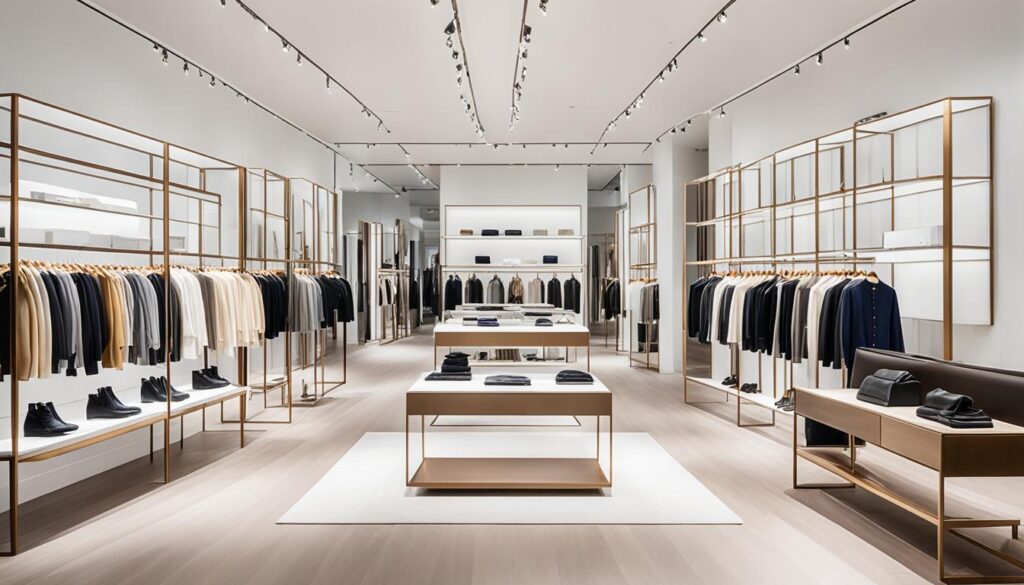
The making of high-end fashion is a labor-intensive process that involves a fusion of art and skill. It is this attention to detail, craftsmanship, and commitment to excellence that makes luxury fashion truly exclusive and coveted.
Redefining Prestige: The Surge of Digital Presence in Luxury Brands
As the world becomes increasingly digital, luxury brands are embracing the power of the online landscape to enhance their prestige and reach a wider audience. A strong digital presence has become essential for luxury fashion brands to stay relevant and competitive in today’s market. This section will explore the growing importance of digital presence in the luxury fashion industry and its impact on brand image and customer engagement.
Innovative Online Campaigns Shaping Brand Image
Luxury brands are leveraging digital platforms to create innovative online campaigns that not only capture attention but also shape brand image and perception. These campaigns go beyond traditional advertising methods, utilizing technology and creativity to engage with consumers in unique ways. Through captivating visuals, compelling storytelling, and interactive experiences, luxury brands are able to connect with their target audience and evoke emotions that align with their brand ethos.
One notable example of an innovative online campaign is the collaboration between luxury brand Burberry and Chinese social media platform WeChat. Burberry launched an AR (augmented reality) experience on WeChat, allowing users to try on virtual versions of their iconic trench coats and accessories. This interactive campaign not only showcased the brand’s products but also provided an immersive and personalized experience for consumers, reinforcing Burberry’s commitment to innovation and digital leadership.
Another successful online campaign was executed by luxury fashion brand Gucci. The brand partnered with digital artist Ignasi Monreal to create a series of captivating illustrations for their #GucciHallucination campaign. These illustrations were showcased across various digital channels, including social media platforms and the brand’s website, generating widespread buzz and engagement. By embracing the digital medium, Gucci was able to captivate audiences and position itself as a frontrunner in merging art, fashion, and technology.
The Intersection of Technology and High-Fashion
The surge of digital presence in luxury fashion has also seen a convergence of technology and high-fashion. Luxury brands are embracing advancements in technology such as AI (artificial intelligence), AR (augmented reality), and social media to enhance their offerings and create unique customer experiences.
One way technology is revolutionizing high-fashion is through virtual try-on experiences. Luxury brands are incorporating AR technology into their online platforms, allowing customers to virtually try on clothing and accessories before making a purchase. This not only enhances the convenience of online shopping but also gives customers a better sense of how the products will look and fit. As a result, the barrier between the virtual and physical shopping experience is blurred, creating a seamless and immersive journey for consumers.
Additionally, luxury brands are leveraging social media platforms to engage with their audience on a more personal level. They utilize social platforms as a means to share behind-the-scenes content, collaborate with influencers and celebrities, and provide exclusive access to new collections and events. By embracing technology and digital platforms, luxury brands are able to foster a sense of exclusivity and connection, making customers feel like they are part of an exclusive community.
To visually represent the surge of digital presence in luxury brands, here is an image:
| Benefits of Digital Presence in Luxury Brands | Challenges Faced by Luxury Brands in the Digital Space |
|---|---|
|
|
Overall, the surge of digital presence in luxury brands is redefining the notion of prestige within the industry. By effectively leveraging technology and innovative online campaigns, luxury brands are able to connect with their audience on a deeper level, enhance their brand image, and ultimately drive customer loyalty and sales. As technology continues to evolve, luxury brands must keep pace and continue to find new ways to elevate the digital experience and stay ahead of the curve in the ever-changing landscape of high-end fashion.
The Art of Luxury Accessories: More Than Just Embellishments
In the world of luxury fashion, accessories play a crucial role in completing a high-end look. From handbags to watches, luxury accessories not only enhance an outfit but also make a statement about personal style and social status. These meticulously crafted pieces are more than just embellishments; they are symbols of aspiration and prestige.
Iconic luxury brands have mastered the art of creating accessories that exude sophistication and elegance. When you think of luxury watches, names like Rolex and Patek Philippe come to mind. These timepieces are not only precise and functional but also epitomize luxury and exclusivity. The elegant design, intricate detailing, and exquisite craftsmanship make them highly coveted among luxury fashion enthusiasts.
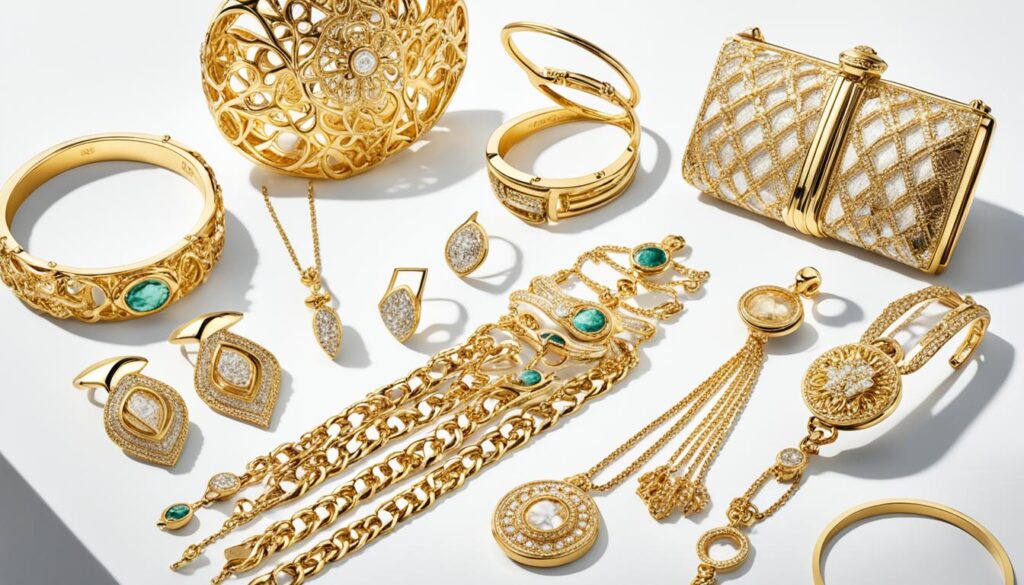
Handbags are another essential accessory in the world of luxury fashion. Brands like Louis Vuitton, Hermès, and Chanel have become synonymous with luxury handbags. The iconic monogram patterns, premium materials, and meticulous construction make these bags highly desirable and instantly recognizable. Carrying a luxury handbag not only adds glamour to an outfit but also reflects one’s refined taste and discerning eye for quality.
When it comes to luxury fashion, jewelry holds a special place. From diamond necklaces to designer earrings, luxury jewelry brands like Tiffany & Co., Cartier, and Van Cleef & Arpels create exquisite pieces that are a testament to timeless elegance and opulence. These luxury accessories not only elevate an outfit but also become cherished heirlooms, passed down through generations.
The craftsmanship and design that go into creating luxury accessories are unparalleled. Each piece is meticulously crafted by skilled artisans who pay attention to the smallest details, ensuring the highest level of quality. From selecting the finest materials to hand-finishing each element, luxury brands leave no stone unturned in their pursuit of perfection.
In conclusion, luxury accessories are more than just embellishments in the world of high-end fashion. They are statements of personal style, symbols of prestige, and testaments to exceptional craftsmanship. Whether it’s a luxury watch, handbag, or jewelry, these accessories enhance an outfit, leaving a lasting impression of sophistication and elegance. The allure of luxury accessories lies not only in their beauty but also in the stories they tell and the emotions they evoke.
Cultural Capital: The Global Expansion of Luxury Fashion Brands
As luxury fashion brands continue to dominate the global market, their expansion into diverse markets has become imperative for sustained growth and relevance. To thrive in foreign territories, luxury brands must adapt their products and marketing strategies to cater to different cultural contexts. This section explores the global expansion of luxury fashion brands, their ability to navigate diverse markets, and the collaborative efforts that bridge cross-cultural gaps.
Adapting High Fashion to Diverse Markets
One of the key challenges faced by luxury brands during their global expansion is understanding and meeting the demands of diverse markets. Luxury fashion is deeply rooted in cultural sensibilities and personal expression, requiring brands to customize their offerings to resonate with local consumers. This adaptation goes beyond mere translation, encompassing design modifications, fabric choices, and style preferences. By effectively capturing the essence of local aesthetics and traditions, luxury brands can establish a strong presence in new markets.
Collaborative Efforts and Cross-Cultural Relevance
To successfully penetrate foreign markets, luxury brands often engage in cross-cultural collaborations that foster mutual respect and understanding. Collaborations with local artisans, designers, and artists allow luxury brands to infuse their collections with elements of the local culture, making them more relevant and appealing to the target audience. These partnerships not only showcase the brand’s commitment to cultural appreciation but also create unique products that resonate with consumers on a deeper level.
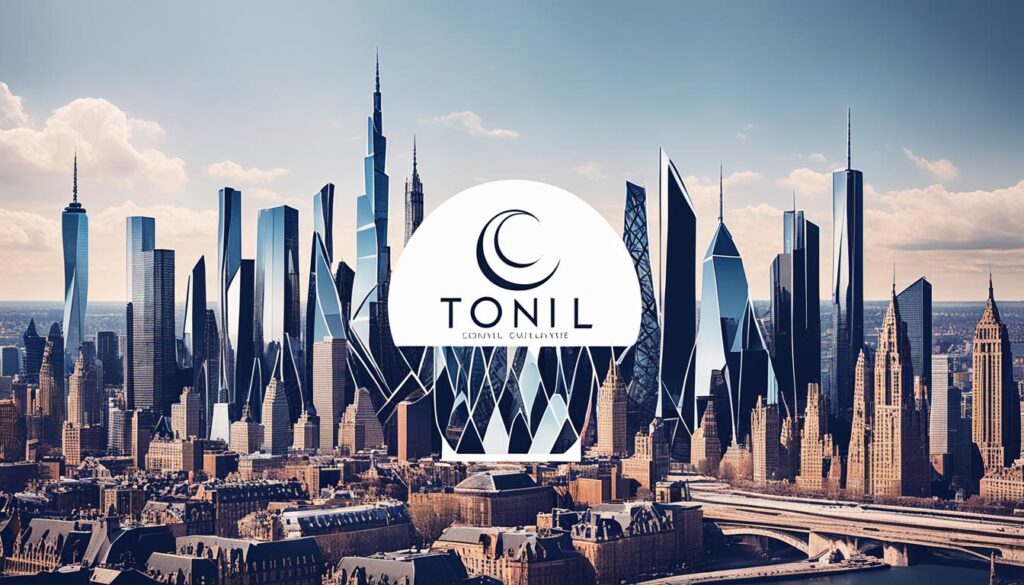
| Benefits of Cross-Cultural Collaborations | Examples |
|---|---|
| Increased brand visibility in new markets | 1. Louis Vuitton x Jeff Koons Collaboration |
| Improved brand perception as culturally inclusive | 2. Adidas x Pharrell Williams Collaboration |
| Access to local expertise and craftsmanship | 3. Hermès x Indian Artisans Collaboration |
| Enhanced brand reputation as socially conscious | 4. Gucci x Dapper Dan Collaboration |
Environmental Consciousness in High Fashion: The Sustainable Shift
The fashion industry has witnessed a significant shift towards sustainability and environmental consciousness, with luxury fashion brands taking the lead in embracing sustainable practices. As consumers become more aware of the environmental impact of fast fashion and the need for sustainable alternatives, high-end brands are redefining their approach to production, materials, and supply chains.
Integrating sustainability into their core ethos, luxury brands are actively adopting eco-friendly practices to reduce their carbon footprint and minimize waste. From sourcing organic and recycled materials to implementing ethical manufacturing processes, these brands are revolutionizing the industry by prioritizing ethical and sustainable fashion.
Not only are luxury brands promoting sustainable fashion through their products, but they also advocate for environmental consciousness in various ways. Through partnerships with environmental organizations and initiatives, high-end brands contribute to conservation efforts and raise awareness about the importance of sustainable living.
The move towards sustainable fashion is not only driven by environmental concerns but also by consumer demand. Today’s luxury fashion consumers prioritize products that align with their values, and sustainable fashion has become a significant factor in their purchasing decisions. As a result, luxury brands are driven to integrate sustainability seamlessly into their offerings, combining style and environmental responsibility.
To further educate consumers and stakeholders on their sustainable initiatives, luxury brands employ transparency in their communication strategies. By sharing information on their sustainable sourcing methods, production processes, and environmental goals, these brands establish trust and credibility with their audience.
The sustainable shift in high fashion showcases the industry’s commitment to creating a more environmentally conscious future. Luxury brands are leading the way by not only embracing sustainable practices but also influencing the broader fashion industry to adopt similar approaches. As consumers continue to prioritize sustainable fashion and demand greater transparency, the path towards a more sustainable fashion industry is becoming increasingly evident and promising.
Forecasting the Future: What Awaits the High-End Fashion Industry
In the dynamic world of fashion, change is the only constant. As the luxury fashion industry continues to evolve, it is essential to explore the trends and factors that will shape its future. In this section, we will delve into the emerging trends that are set to redefine the high-end fashion landscape and the impact they will have on luxury brands.
Trends Shaping the Future of High-End Fashion
The fashion industry is known for its cyclical nature, with trends coming and going. However, certain trends have the potential to create a lasting impact on luxury fashion. Here are some key trends that will influence the future of high-end fashion:
- 1. Sustainability: As consumers become more conscious of their environmental impact, sustainability has become a growing concern in the fashion industry. Luxury brands are incorporating sustainable practices into their manufacturing processes, utilizing eco-friendly materials, and promoting ethical fashion.
- 2. Technology Integration: The digital age has revolutionized the way we engage with fashion. High-end brands are embracing technology, such as augmented reality (AR) and artificial intelligence (AI), to enhance the shopping experience, personalize products, and connect with consumers on a deeper level.
- 3. Cultural Diversity: With globalization, the high-end fashion industry is experiencing a shift towards embracing cultural diversity. Luxury brands are collaborating with designers from different backgrounds, celebrating unique perspectives, and catering to a more inclusive customer base.
- 4. Gender Fluidity: The boundaries of gender in fashion are blurring, creating opportunities for unisex and gender-neutral designs. Luxury brands are redefining traditional gender norms and offering more diverse and inclusive options for consumers.
Emerging Designers and the Next Generation of Luxury
The future of high-end fashion lies in the hands of emerging designers who bring fresh ideas and innovative perspectives to the industry. These designers challenge conventional norms and push boundaries, setting new standards for luxury fashion. Their creativity, passion, and unique design philosophies pave the way for the next generation of luxury.
As emerging designers continue to gain recognition, luxury brands are taking notice and collaborating with them to infuse their collections with new energy and creativity. This collaboration between established luxury brands and emerging talents not only fosters creativity but also offers a platform for the next wave of fashion innovators to showcase their talent.
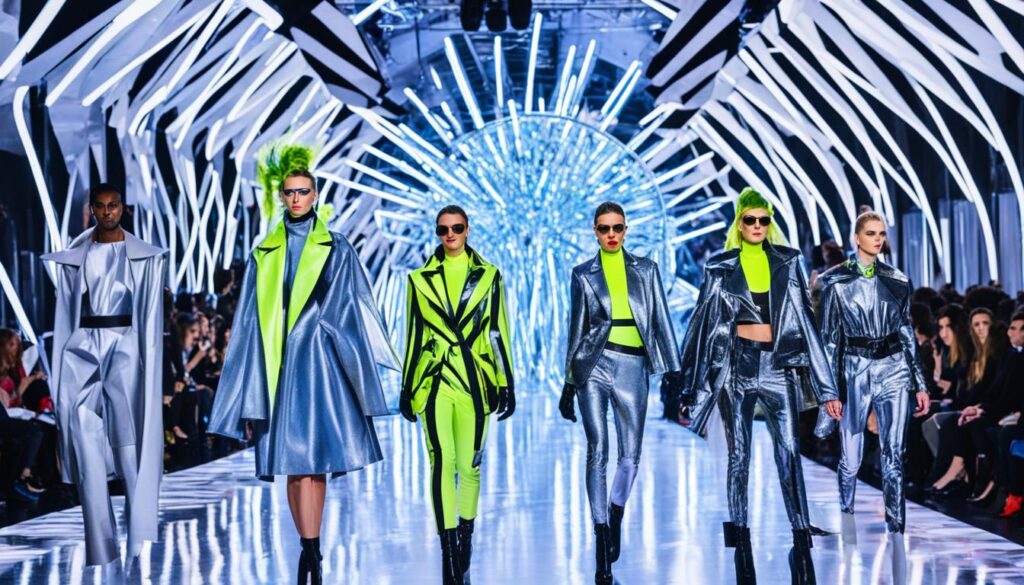
By embracing emerging designers, luxury brands can tap into the pulse of evolving consumer preferences and stay relevant in an ever-changing industry.
| Trend | Impact on High-End Fashion |
|---|---|
| Sustainability | Luxury brands incorporating sustainable practices and materials, promoting ethical fashion. |
| Technology Integration | Enhanced shopping experiences, personalized products, and deeper connections with consumers through AR, AI, and digital platforms. |
| Cultural Diversity | Celebration of unique perspectives, collaborations with designers from diverse backgrounds, and inclusivity in luxury fashion. |
| Gender Fluidity | Redefinition of traditional gender norms, unisex and gender-neutral designs in high-end fashion. |
The future of high-end fashion is an exciting amalgamation of these trends, driven by the creativity of emerging designers and the willingness of luxury brands to adapt and innovate. As we look forward, the fashion industry is poised for an era of sustainability, inclusivity, and boundary-pushing aesthetics.
Conclusion
In conclusion, the world of luxury fashion and high-end brands holds a significant place in the fashion industry. Throughout this article, we have explored the essence and evolution of luxury fashion, understanding why we aspire to own luxury brands, and the role of luxury brands in social status and identity.
We have also delved into the icons of elegance, highlighting the legacy of French couturiers like Chanel and Dior, as well as the mastery of Italian craftsmanship found in brands like Gucci and Prada. Furthermore, we have discussed the ingredients of exclusivity that make high-end fashion desirable, such as premium materials and meticulous production processes.
Additionally, we have explored the surge of digital presence in luxury brands, the art of luxury accessories, the global expansion of luxury fashion brands, and the increasing importance of sustainability in the industry. Finally, we have provided insights into the future of high-end fashion, including emerging trends and the influence of emerging designers.
As high-end fashion and luxury brands continue to shape the industry, it is evident that their significance will only grow. These brands not only represent high-quality craftsmanship and design, but they also symbolize status, self-expression, and cultural capital. Looking ahead, the future of high-end fashion holds promises of technological advancements, sustainability, and the continued emergence of new talent. The world of luxury fashion is ever-evolving, captivating and inspiring us with its constant pursuit of excellence.
